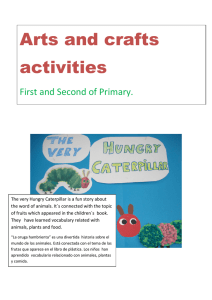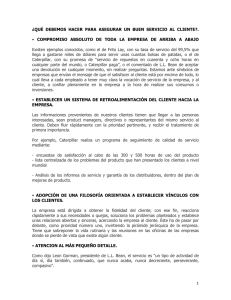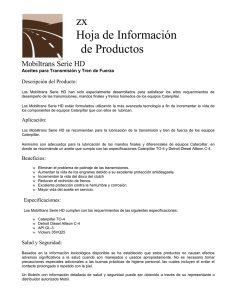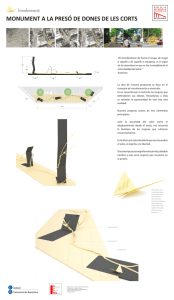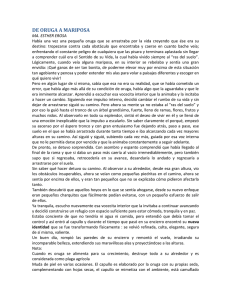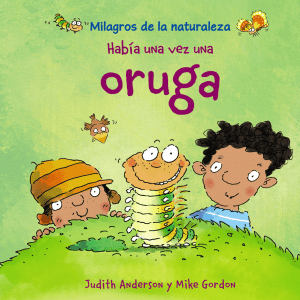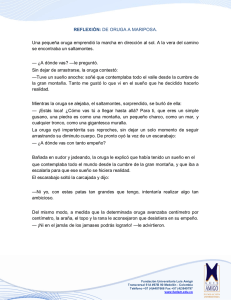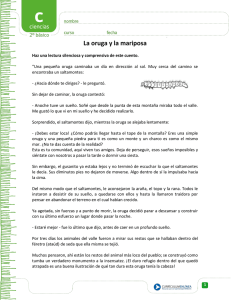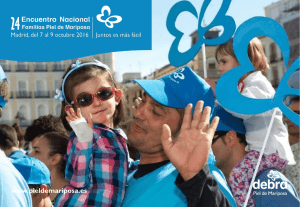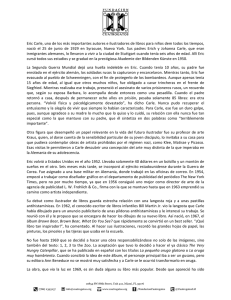Life Cycle Wheel - Children`s Museum of Houston
Anuncio
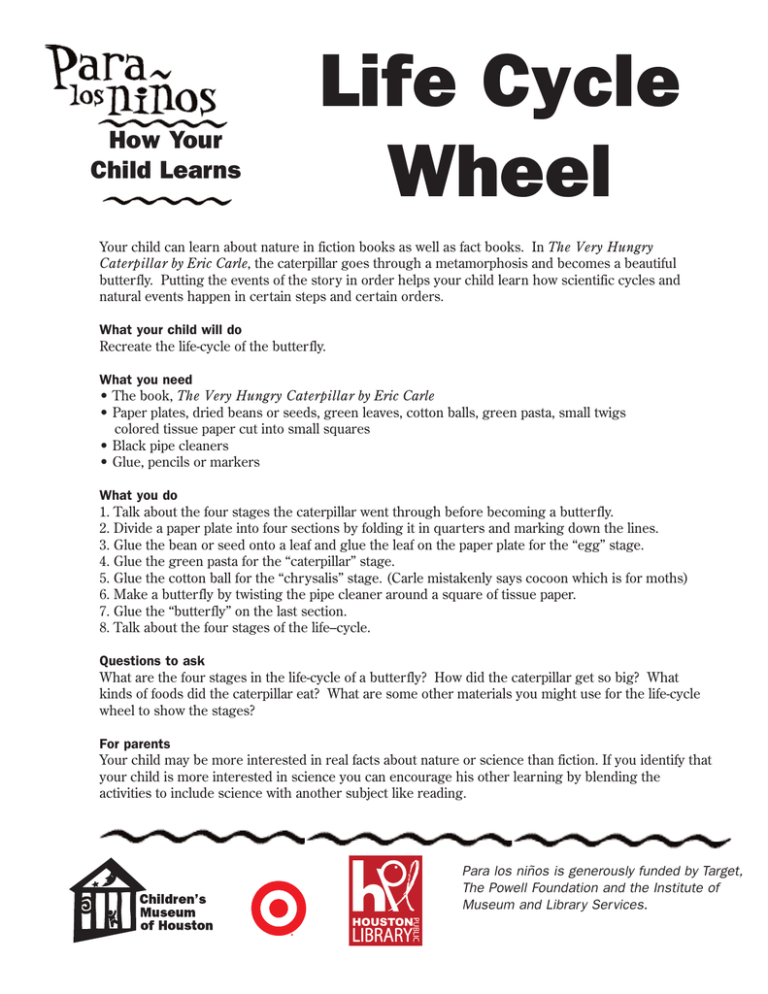
How Your Child Learns Life Cycle Wheel Your child can learn about nature in fiction books as well as fact books. In The Very Hungry Caterpillar by Eric Carle, the caterpillar goes through a metamorphosis and becomes a beautiful butterfly. Putting the events of the story in order helps your child learn how scientific cycles and natural events happen in certain steps and certain orders. What your child will do Recreate the life-cycle of the butterfly. What you need • The book, The Very Hungry Caterpillar by Eric Carle • Paper plates, dried beans or seeds, green leaves, cotton balls, green pasta, small twigs colored tissue paper cut into small squares • Black pipe cleaners • Glue, pencils or markers What you do 1. Talk about the four stages the caterpillar went through before becoming a butterfly. 2. Divide a paper plate into four sections by folding it in quarters and marking down the lines. 3. Glue the bean or seed onto a leaf and glue the leaf on the paper plate for the “egg” stage. 4. Glue the green pasta for the “caterpillar” stage. 5. Glue the cotton ball for the “chrysalis” stage. (Carle mistakenly says cocoon which is for moths) 6. Make a butterfly by twisting the pipe cleaner around a square of tissue paper. 7. Glue the “butterfly” on the last section. 8. Talk about the four stages of the life–cycle. Questions to ask What are the four stages in the life-cycle of a butterfly? How did the caterpillar get so big? What kinds of foods did the caterpillar eat? What are some other materials you might use for the life-cycle wheel to show the stages? For parents Your child may be more interested in real facts about nature or science than fiction. If you identify that your child is more interested in science you can encourage his other learning by blending the activities to include science with another subject like reading. Para los niños is generously funded by Target, The Powell Foundation and the Institute of Museum and Library Services. Como aprende Taking Turns Taking Time su niño Rueda del ciclo de la vida Su niño puede aprender sobre la naturaleza en libros de ficción así cómo en libros sobre hechos reales. En el libro La oruga muy hambrienta por Eric Carle, la oruga a través de una metamorfosis se transforma en una mariposa hermosa. Poniendo los eventos de la historia en orden le ayuda a su niño a aprender cómo los ciclos científicos y los eventos naturales suceden conforme a ciertos pasos. Lo que hará su niño Recrear el ciclo de la vida de la mariposa. Lo que usted necesita •El libro - La oruga muy hambrienta por Eric Carle •Platos de cartón, frijoles secos o semillas, hojas verdes, bolas de algodón, pasta verde y ramitas •Toallitas de papel de color recortadas en cuadrados pequeños •Limpiadores de pipa negros •Pegadura, lápices o plumones Lo que usted hace 1. Conversar sobre las cuatro etapas que la oruga pasó ante de volverse en mariposa. 2. Dividir un plato de cartón en cuatro secciones doblándolo en cuartos y marcando las líneas. 3. Pegar la semilla en una hoja y pegar la hoja en el plato de cartón para crear el “huevo”. 4. Pegar la pasta verde para hacer la etapa de la “oruga”. 5. Pegar las bolas de algodón para hacer la etapa de la “crisálida” o capullo. 6. Hacer una mariposa doblando los limpiadores de pipa alrededor de una toallita de papel. 7. Pegar la “mariposa” sobre la cuarta sección. 8. Conversar sobre las cuatro etapas del ciclo de la vida. Preguntas ¿Cuáles son las cuatro etapas en el ciclo de la vida de una mariposa? ¿Cómo creció tanto la oruga? ¿Qué clase de alimentos comió la oruga? ¿Qué otros materiales podrías usar en la rueda del ciclo de vida para demostrar las etapas? Para los padres Su niño puede estar más interesado en hechos reales sobre la naturaleza o en las ciencias que en la ficción. Si usted identifica que su hijo está más interesado en las ciencias usted puede fomentar su otro aprendizaje mezclando las actividades para incluir ciencias y otra materia como la lectura. Para los niños está generosamente financiado por Target, The Powell Foundation y el Institute of Museum and Library Services.
